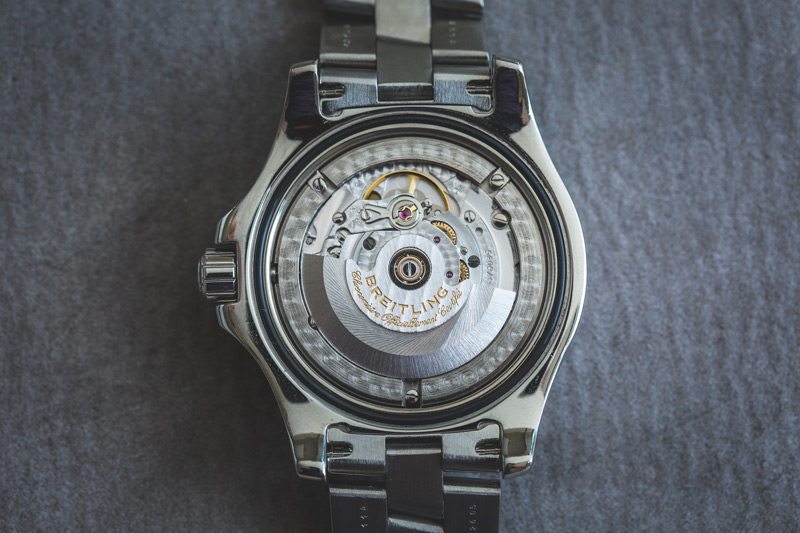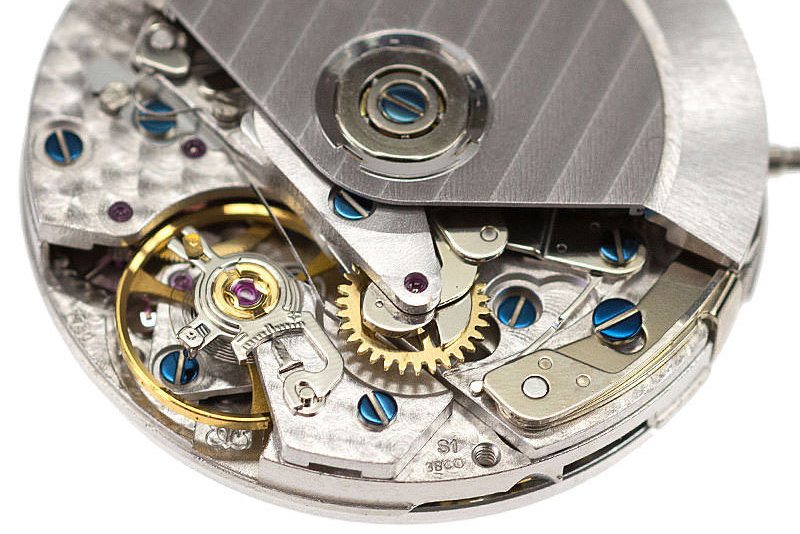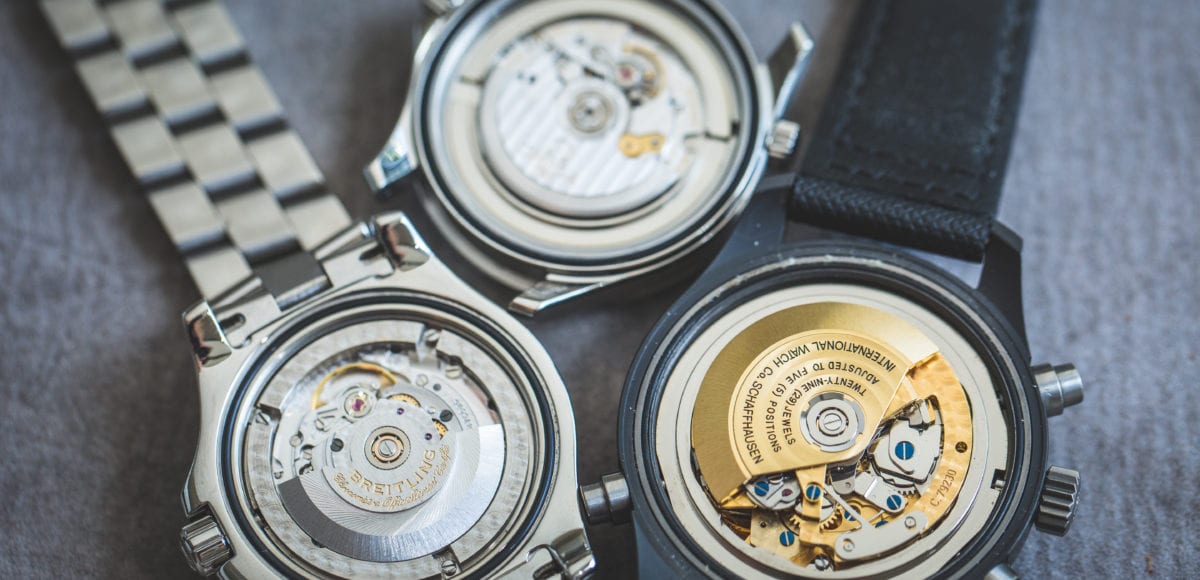The rivalry between in-house and ETA movements is decades old. However, it seems to be more prevalent in recent years as growing numbers of manufacturers create their own calibers in-house. As a result, in-house movements have become an increasingly attractive selling point for consumers. There’s certainly something to be said about the movement inside a watch matching the brand name on the dial. Yet, it’s still up for debate whether these movements are actually superior to ETA calibers.

A base ETA 2824 movement in a Breitling Colt’s caliber 17
Part of the issue lies in the mystery around ETA. ETA is essentially a wholesaler, meaning they don’t sell directly to consumers. Instead, they sell exclusively to brands. Without that direct marketing and engagement with consumers, some stigmas or misconceptions have developed about ETA movements. It might surprise you to learn that ETA is in fact Switzerland’s largest movement maker. Over the course of its history spanning two centuries, ETA has gone through its fair share of ups and downs, mergers and consolidations. However, without ETA, the Swiss watch industry very likely wouldn’t be where it is today. Here, we’ll dive deeper into the history of this manufacturer and its role in the market today.
The Founding of ETA
In the 1800s, the elements that made up the watch industry were quite disconnected. Different artisans made each individual component. Then, brands were responsible for procuring each component and assembling them into completed watches. By the latter half of the century, ebauche factories began to form. They produced partially assembled movements that contained the basic structural elements without the mainspring or the escapement. One such factory was “Dr. Girdard & Schild,” which would later go on to become ETA.
The onset of WWI disrupted the more organized system that had started to form in the watch industry. All types of factories, including those making watch components, shifted their focus to manufacturing ammunition. After the war, they were eager to return to business as usual, but the demand in the watch industry had shifted. Soon, there was an oversupply, turnover decreased, competition in other markets grew stronger, and debt amounted. The Swiss watch industry was in trouble.

A base ETA 2892 movement in an OMEGA Seamaster’s caliber 1120
In 1924, a majority of the industry decided to consolidate, ban together, and form the Swiss Watch Federation. Two years later, three of the largest movement makers established Ebauches SA. Just as things began to look up, the market took another hit with the Great Depression. As a result, the General Swiss Watch Industry AG established in 1931.
All the while, “Dr. Girdard & Schild,” now renamed Eterna, skirted much of the fray. By 1929, they had employed over 800 workers and produced roughly two million parts each year. In addition, they expanded beyond ebauches and into watch assembly. Eterna was reluctant to merge with the larger organizations but also saw the advantages. Ultimately, they decided to join, which required them to split into two entities. One remained Eterna as watch assemblers, and the other made movements as ETA SA.
A New Era for ETA
Under the General Swiss Watch Industry AG, movement manufacturers began specializing in different types of movements. Here, ETA focused on automatic calibers, which were quickly growing in popularity. By 1948, ETA had founded its own watchmaking school where they could recruit and train their artisans. For the next few decades, ETA and the Swiss industry began to prosper once again.
Next came the onset of the Quartz Crisis in the 1970s and 80s. ETA pivoted to producing some quartz calibers. In fact, in 1978, they created the world’s thinnest quartz watch at the time, the Delirium, which measured just 1.98mm. However, the power of the Asian market in combination with the oil crisis of the same era still weighed heavily on the Swiss.
ETA in the Modern Era

The Quartz Crisis ultimately resurfaced many of the same issues for the Swiss watch industry that arose in the 1920s. It was time for another restructuring. However, this time, the Swiss banks were willing to sell the manufacturers along with their patents and heritage to the highest bidder. The Swiss watch industry was almost sold to the Japanese until one man interceded. Nicolas G. Hayek, President of Hayek Engineering AG, couldn’t allow the Swiss watchmaking industry to fold.
With the help of two engineers from ETA, he developed the Swatch watch, short for second watch. It was a simple and playful watch that encouraged consumers to express themselves in a new way. Most importantly, it was inexpensive. The Swatch watch was a huge success, and Hayek was able to salvage the Swiss watchmaking industry, including ETA. In 1985, he founded the Swiss Corporation for Microelectronics and Watchmaking Industries Ltd. This would later become Swatch Group Ltd. in 1998 and the new home for ETA to this day.
The Swatch Group quickly saw the promise of ETA and invested heavily in its expansion. They bought out a number of specialized manufacturers and diversified ETA. Soon, they took over not only movement and component manufacturers but also case, dial, and crown makers along with assemblers. All in all, ETA was broken down into an array of specialized subsidiaries to cover just about every facet of the watchmaking process.
New Millennium, New ETA

With ETA’s new place in the Swatch Group, the pendulum started swinging in the other direction – perhaps too far. ETA’s presence grew so quickly and became so widespread, they were becoming the supplier of critical watch components to everyone in the industry, including the Swatch Group’s competitors. Soon, Switzerland’s Competition Commission ruled they were in a monopoly position. So, in 2002, they rolled out an eight-year plan to scale back. ETA would maintain its current role until 2008. Then, they’d begin scaling back the number of movements and components sold to competitors around 2011. By 2012, they had reduced their supplies by 15% and another 10% by 2014. So in fact, the rise in in-house movements is in part a result of ETA’s cutbacks, not because of ETA’s inferiority – quite the opposite. It’s clear to see that ETA has and continues to play a crucial role in the industry.
Get More Articles Like This in Your Inbox
We're constantly creating great content like this. So, why not get it delivered directly to your inbox? By subscribing you agree to our Privacy Policy but you can unsubscribe at any time.






